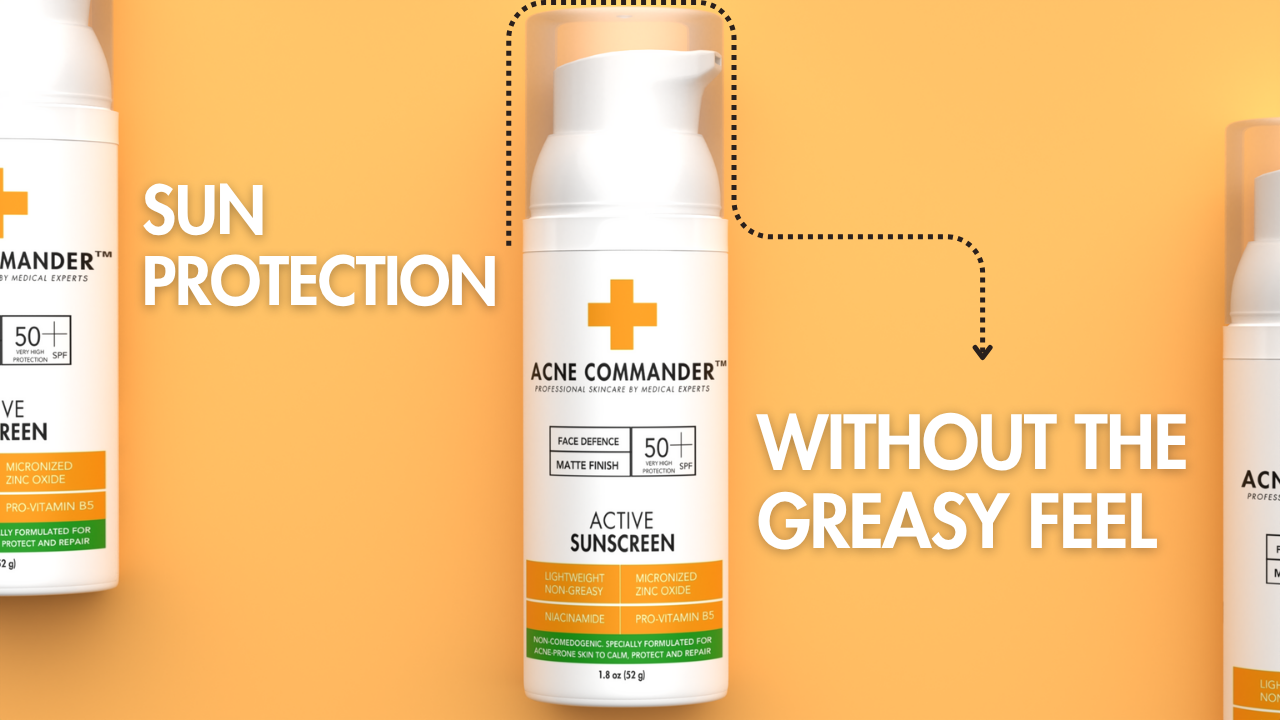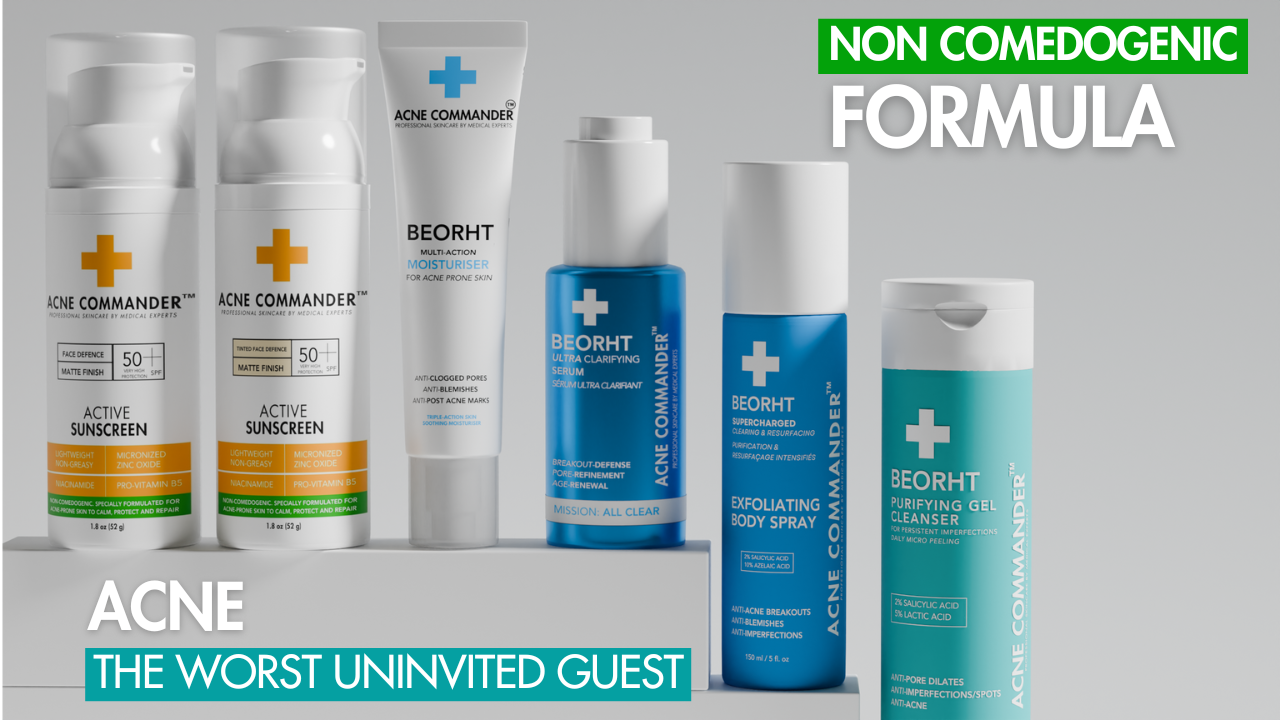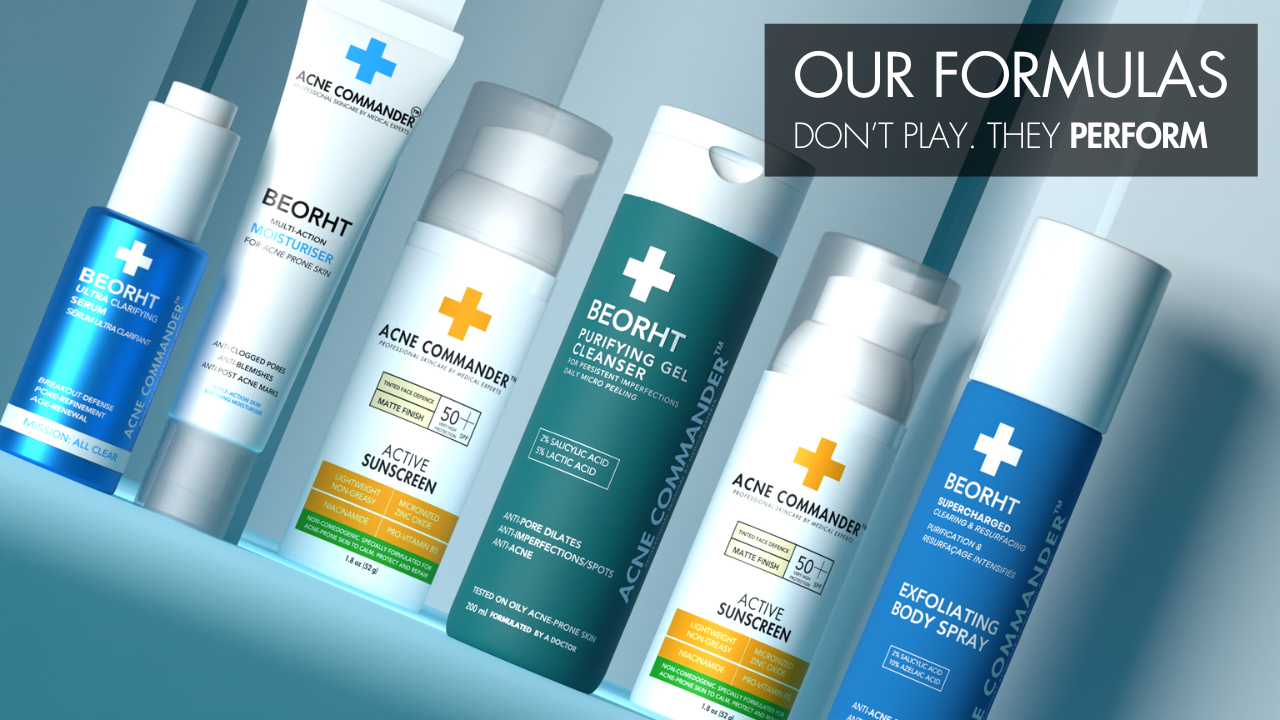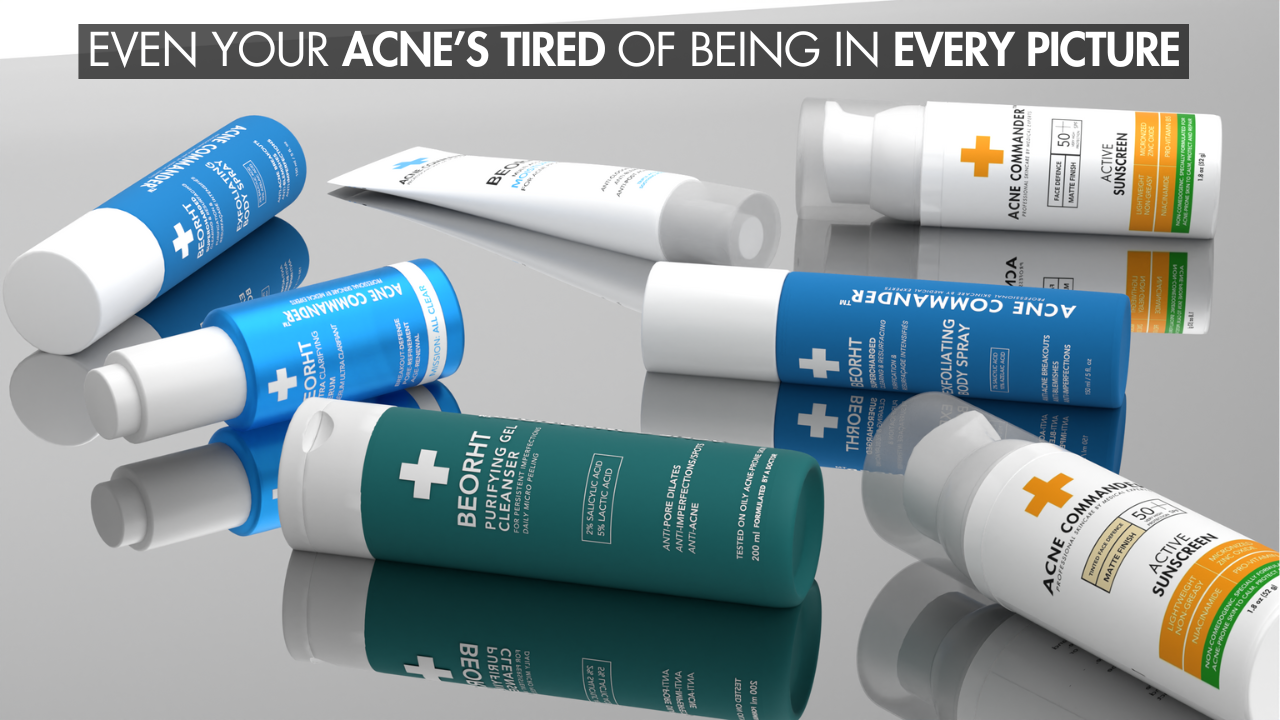Introduction
Acne can be a frustrating condition to manage, but the right cleanser can make all the difference. Whether you’re dealing with mild breakouts or more severe cystic acne, choosing a good cleanser for acne is essential in your skincare routine. The best cleansers help clear your skin, maintain healthy moisture levels, and prevent future breakouts without causing irritation.
In this article, we’ll explore what makes a good cleanser for acne, the key ingredients to look for, and why Acne Commander’s Beorht Purifying Gel Cleanser is an excellent choice for anyone with acne-prone skin.
What Makes a Good Cleanser for Acne?
A good cleanser for acne should be effective in removing excess oil, dirt, and impurities while maintaining the skin’s natural balance. Here are some key factors that make a good acne cleanser:
Deep Cleansing: The cleanser should thoroughly remove dirt, oil, and makeup that could clog pores and contribute to acne.
Non-Comedogenic: Non-comedogenic products are essential for acne-prone skin because they do not clog pores, which is one of the leading causes of acne.
Gentle on the Skin: Harsh cleansers can strip the skin of its natural oils, leading to dryness, irritation, and even more breakouts. A good acne cleanser should cleanse without irritating.
Exfoliating Ingredients: Ingredients like Salicylic Acid or Lactic Acid help exfoliate the skin, removing dead skin cells and preventing clogged pores, which are a key factor in acne formation.
Hydrating Properties: Acne treatments often leave the skin feeling dry. A good acne cleanser should also hydrate the skin, preventing dryness and irritation.
Why Beorht Purifying Gel Cleanser is a Good Cleanser for Acne
Acne Commander’s Beorht Purifying Gel Cleanser is a great choice for acne-prone skin due to its carefully selected ingredients that target acne-causing factors while maintaining the skin’s health. Here’s why it stands out:
Non-Comedogenic Formula: Beorht Purifying Gel Cleanser is designed to be non-comedogenic, meaning it won’t clog pores and will not contribute to new breakouts.
Salicylic Acid 2%: This BHA is ideal for acne-prone skin because it penetrates deep into the pores, clearing out oil, dirt, and impurities that can cause acne. It also has anti-inflammatory properties, reducing redness and swelling associated with acne.
Lactic Acid 5%: Lactic Acid gently exfoliates the surface of the skin, helping to improve skin texture and prevent future breakouts by promoting cell turnover.
Soothing Plant Extracts: Beorht contains Scutellaria Baicalensis Root Extract and Sophora Angustifolia Root Extract, which are known for their calming and anti-inflammatory effects, helping to reduce redness and irritation associated with acne.
Hydrating Ingredients: Unlike many acne cleansers that dry out the skin, Beorht includes ingredients like Butylene Glycol and Sodium PCA, which help to keep the skin hydrated while cleansing.
Key Ingredients to Look for in a Good Acne Cleanser
When choosing a good cleanser for acne, it’s important to look for ingredients that will target the root causes of acne. Here are some of the best ingredients to look for:
Salicylic Acid
Salicylic Acid is a beta hydroxy acid (BHA) that helps exfoliate the skin and clear out clogged pores. It’s one of the best ingredients for treating acne, as it penetrates deep into the pores to dissolve oil and prevent future breakouts.
Lactic Acid
Lactic Acid is an alpha hydroxy acid (AHA) that exfoliates the skin’s surface, removes dead skin cells, and promotes skin renewal. It also helps brighten the skin and fade post-acne marks.
Benzoyl Peroxide
Benzoyl Peroxide is known for its ability to kill acne-causing bacteria. It’s an effective ingredient for treating inflamed pimples and cystic acne, although it can be drying, so it’s important to use it in moderation.
Tea Tree Oil
Tea Tree Oil has natural antimicrobial properties that help reduce acne-causing bacteria. It’s a gentle yet effective ingredient that can soothe and heal acne-prone skin without causing irritation.
Niacinamide
Niacinamide (Vitamin B3) is a soothing anti-inflammatory ingredient that helps reduce redness and swelling associated with acne. It also helps to balance oil production and minimize the appearance of pores.
How to Use a Good Cleanser for Acne
To get the most out of your acne cleanser, follow these steps to ensure you’re using it correctly:
Step 1: Wet Your Face with Lukewarm Water
Begin by wetting your face with lukewarm water to open up the pores. This allows the cleanser to penetrate deeper and work more effectively.
Step 2: Apply the Cleanser
Dispense a small amount of your acne cleanser (like Beorht Purifying Gel Cleanser) and massage it gently into your skin in circular motions. Focus on areas that tend to be oilier, such as your T-zone (forehead, nose, and chin).
Step 3: Rinse Thoroughly
After massaging for 30 seconds to a minute, rinse your face with lukewarm water. Make sure to remove all traces of the cleanser to prevent residue that could clog your pores.
Step 4: Follow Up with Toner and Moisturizer
Once your face is clean, use a toner to restore the skin’s pH balance and follow up with a non-comedogenic moisturizer to keep your skin hydrated and nourished without clogging pores.
Common Mistakes to Avoid When Using an Acne Cleanser
Even with a good acne cleanser, it’s easy to make mistakes that can worsen your acne. Here are some common mistakes to avoid:
Over-Cleansing: Cleansing your face too often can strip away natural oils and cause the skin to overproduce oil, leading to more acne. Stick to cleansing twice a day morning and night.
Using Harsh Products: Avoid cleansers with alcohol, fragrances, or harsh exfoliants that can irritate the skin and make acne worse. Opt for gentle, acne-specific cleansers instead.
Skipping Moisturizer: Even acne-prone skin needs hydration. Skipping moisturizer can leave your skin dry and irritated, which can make acne worse. Always follow up with a hydrating, non-comedogenic moisturizer.
Not Removing Makeup First: Always remove makeup before cleansing to ensure your cleanser can work effectively. Use a makeup remover or micellar water to break down makeup before using your acne cleanser.
FAQ Section
Q1: What’s the best cleanser for acne-prone skin?
Acne Commander’s Beorht Purifying Gel Cleanser is one of the best cleansers for acne-prone skin due to its non-comedogenic formula, Salicylic Acid, and Lactic Acid, which help target acne and prevent future breakouts.
Q2: Can I use a regular face wash for acne?
While regular face washes may cleanse your skin, they often don’t contain acne-fighting ingredients like Salicylic Acid or Benzoyl Peroxide. An acne-specific cleanser like Beorht is formulated to treat and prevent breakouts.
Q3: How often should I use an acne cleanser?
Cleanse twice a day once in the morning and once at night. Over-cleansing can irritate your skin and make acne worse.
Q4: Does Beorht help with acne scars?
Yes, the Lactic Acid in Beorht helps to exfoliate the skin, which can improve texture and reduce the appearance of acne scars over time.
Q5: Can I use Beorht Purifying Gel Cleanser with other acne treatments?
Yes, Beorht works well alongside other acne treatments. Just be careful not to over-exfoliate or use too many harsh products at once.
Conclusion
A good cleanser for acne is the first step in a successful skincare routine. Acne Commander’s Beorht Purifying Gel Cleanser offers a gentle, yet powerful formula to treat acne without irritating the skin. With its blend of Salicylic Acid, Lactic Acid, and soothing plant extracts, Beorht is the perfect choice for acne-prone skin.
Call to Action: Ready to fight acne with the best cleanser? Try Acne Commander’s Beorht Purifying Gel Cleanser today and start your journey to clearer, healthier skin!





